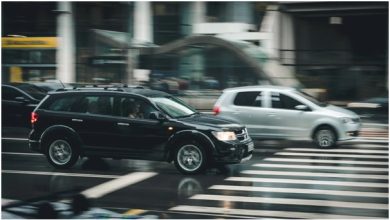Which Is Better, Ford Bronco or Jeep Wrangler Rubicon?
If you are looking for a capable off-road vehicle, chances are you will be choosing between the new Ford Bronco and the Jeep Wrangler Rubicon. For decades, the Wrangler has been the dominant trendsetter in its class, constantly raising the bar. At least until recently, when another carmaker from Motor City unveiled a promising contender to this prestigious title.
By reviving the legendary Bronco, Ford immediately caused quite a stir among automotive professionals and enthusiasts. From day one, there was no doubt the new vehicle would give (or at least try to give) the Wrangler a run for its money. Still, the question remains — which one is the better off-roader? To find out, we’ll compare each and see how they fare head to head. In all cases, though, if you do purchase either of the two, keep in mind that a proper Wrangler or Ford Bronco manual can help keep ownership costs on the lower side—after all, vehicles frequently driven off the beaten paths require more frequent services than most.
Off-Roading Icon
The Jeep Wrangler is one of those iconic vehicles, so popular that they need no real introduction, thanks to the unique design and impressive capability to tackle even the harshest terrains. With roots tracing down to the original Willis, the Jeep Wrangler has become a synonym for a capable off-road vehicle.
And the model in this comparison, the Rubicon, is the best and most extreme among all Wranglers. Increased ride height, bigger wheels, and wider fenders are just some of the features that set it apart from standard ones. Not only does accentuate the muscular appearance, but it also makes it more capable when going off-road.
This aggressive new look may be tempting on its own, although the Rubicon’s most significant upside is hiding under the hood. For the first time, the Wrangler is available with a big V8 engine as standard. And the HEMI technology it uses makes it anything but ordinary. This powerhouse will deliver massive amounts of torque throughout the rev range, ensuring superb performance on highways and demanding trails.
Another notable upgrade is the Rock-Track system, improving traction and power distribution on all wheels, thanks to tougher transfer cases, axles with electronic locking differential, and detachable sway bars.
A Legend Reborn
The Ford Bronco had always been one of the biggest names in the segment and quite famous among adventure enthusiasts. When the last model disappeared 25 years ago, many were disappointed. With that in mind, it was only obvious the new Bronco would draw inspiration from the original 50s model. Its boxy shape, sharp body lines, and clever range design gave it a characteristic look that nobody can forget. This alone would make the new Bronco an instant hit, although it’s much more than just a pretty face.
Under the hood, Ford offers two engines, both relatively small when compared to Jeep’s offering. However, even the smaller four-cylinder engine packs quite a punch, primarily thanks to the large turbocharger. And for those who still think this engine is just not enough, Ford has prepared a more powerful V6 unit.
With a pair of turbochargers and aggressive fuel management, it delivers more power and ensures impressive performance. There is, of course, a range of electrical and mechanical wizardry helping the Bronco tackle even the harshest terrains, including user-lockable differentials, hydraulic disconnecting sway bars, and an optional terrain management system.
Which One is Better?
The only way to answer this question is by figuring out what each does better than the other. And to find that out, it is necessary to first examine the differences between them. One of the obvious ones is the track, with the Bronco being significantly wider than the Rubicon. Besides leading to a more spacious cabin, the wider track also makes it more stable when driving on tarmac or tackling rugged terrains. On the downside, this extra width may cause issues for Bronco drivers when going around obstacles on narrower trails.
Still, the biggest differences between these two capable off-roaders hide deep beneath the surfaces. While Jeep uses simple and robust live axles, Bronco has a more sophisticated arrangement, with independent suspension at the front. This configuration improves how the vehicle handles when going through corners and makes it ride smoother.
However, such a setup also makes it slightly less robust. Hence, if you regularly drive off-road, getting your hands on a Ford Bronco repair manual is highly recommended. Of course, the same would also be true for the Rubicon, but it’s safe to assume that you might have to work a lot more on the former’s suspension than the latter. Don’t already have one? Take a look at eManualOnline. Their manuals are affordable and will show you everything you need to first any suspension part you might need.
But I digress.
Another notable difference is the transmission, as the Wrangler is equipped with a low-range gearbox, while the Bronco is not. Instead, its manual transmission is a standard 6-speed gearbox with one additional gear, which Ford calls a “crawler gear.” Although some will argue it could affect the Broncos’ off-road capabilities, judging from initial trail adventures, it doesn’t seem to be the case.
Last Words
As explained above, the Jeep Wrangler and Ford Bronco are very similar off-roaders, aimed at the same demographic. There are, however, a few notable differences that may help decide between the two. The Wrangler is a fully-focused, hardcore machine that can go over any terrain, regardless of how harsh it may be. The Bronco, on the other hand, does a great job at balancing off-road capabilities with on-road handling and ride comfort. They are both great at what they do and it really comes down to asking yourself how often you really drive off-road vs. the daily commute.



